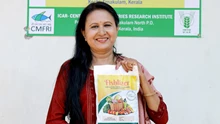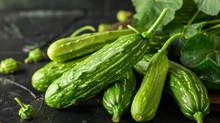
Quinoa is a versatile crop that can grow in diverse climates and soils, making it adaptable to various conditions. Its genetic diversity allows for its breeding in a wide range of environments. Rich in proteins, fibers, and essential amino acids, quinoa offers high nutritional value, especially as a gluten-free option for those with celiac disease. In India, quinoa emerges as a promising solution for nutritious food in dry regions, with Rajasthan, Madhya Pradesh, and Karnataka being key contributors to its production.
Sowing Time
Quinoa is mainly sown during rabi season in India, typically from mid-October to mid-December.
Climate and Soil
-
Quinoa thrives in environments with short day lengths and cool temperatures, making it suitable for cultivation in marginal agricultural areas prone to drought and with low soil fertility.
-
While the ideal temperature for quinoa cultivation is 18-20°C, it can tolerate extremes from 36°C to -8°C. However, temperatures exceeding 36°C may induce plant dormancy or pollen sterility, leading to seed production failure.
-
Quinoa can be grown in sandy-loam to loamy-sand soils, making it well-suited for cultivation. It can adapt to a wide pH range, from acidic soils with pH 5.0 to alkaline soils with pH 9.0. Murum soil, characterized by good drainage properties, is also suitable for cultivating this crop.
Planting Method
-
To grow, quinoa needs a level and well-drained seedbed to prevent waterlogging. Implementing the ridge and furrow system can enhance yields by reducing the risk of seedling damage from waterlogging.
-
The soil, ideally murum soil, should be devoid of large stones and possess adequate organic matter content to retain moisture during the initial 8-10 days.
-
Seeds should be planted 2 to 5 cm deep, depending on soil moisture. A seed rate of 500 to 750 grams per acre suffices, which can be doubled in suboptimal conditions. Mixing seeds with soil at a 1:3 ratio ensures better germination. Increased plant density results in earlier maturity, higher yield, and less branching.
Nutrient Management
-
Incorporating 15-20 tonnes of FYM per hectare before land preparation enhances initial vegetative growth. For optimal yield, a fertilizer dose of N: P: K @ 100:50:50 kg per hectare is recommended.
-
While quinoa responds well to nitrogen fertilizer, it should not exceed 60 to 80 kg N per acre. Excessive nitrogen levels can lead to slower maturity and increased lodging, resulting in reduced yields.
Irrigation
-
This crop exhibits moderate drought tolerance. Research on its water requirements indicates that reducing water application results in a 50% decrease in plant height with only an 18% yield reduction.
-
Over-irrigation post-establishment leads to tall, unproductive plants, while excessive watering during seedling stages causes damping off and severe stunting.
Crop Protection
-
Common diseases include damping-off, downy mildew, stalk rot, leaf spot, gray mold, and bacterial blight. No fungicides are recommended for quinoa, so selecting disease-resistant varieties is crucial.
-
Various insect pests can damage quinoa crops, including flea beetles, aphids, quinoa moths, and the Ticona complex. However, these pests are not major yield-limiting factors. Integrated pest management practices involve using pest-tolerant or -resistant genotypes, natural enemies of pests, and bio-insecticides.
-
Cultural practices like sowing date, nutrient management, crop rotation, and phytosanitation help make the environment less favorable for pests. Additionally, biological control methods involving parasitoid species and predators can effectively control pest populations in quinoa fields.
Harvesting
-
At maturity, quinoa plants develop sorghum-like seed heads. Harvesting begins when seeds are firm but can still be dented with a fingernail, and plants have dried to a pale color with dropped leaves. Rain during harvest can lead to premature germination.
-
Average yields range from 5 to 15 quintals per hectare. An experiment at ICAR-NIASM found superior yields when quinoa was sown in the first half of December, with a seed yield of 6 quintals per hectare.
Threshing and Storage
-
Quinoa panicles are easily threshed and winnowed to separate seeds from chaff. Before food processing, seeds need treatment to remove bitter saponins.
-
In India, quinoa's high protein and low carb content make it promising for cultivation, with minimal disease and pest issues allowing for organic farming. Its adaptability to degraded soil offers good returns to farmers.
Varieties
ICAR-NBPGR, Regional Station in Shimla had developed two varieties of quinoa named "Him Shakti" and "Kuttu" (Buckwheat - "Him Phaphra") which are high-yielding and a good cultivar.
Uses
-
Quinoa offers diverse culinary options, from salads to baked goods.
-
Its short germination period allows for quick sprouting, ideal for salads.
-
The plant serves as fodder, and its residues are used to feed animals.
-
Medicinally, quinoa has anti-inflammatory properties and is applied to various ailments. Saponins from quinoa have versatile uses, including in soaps and insecticides.










